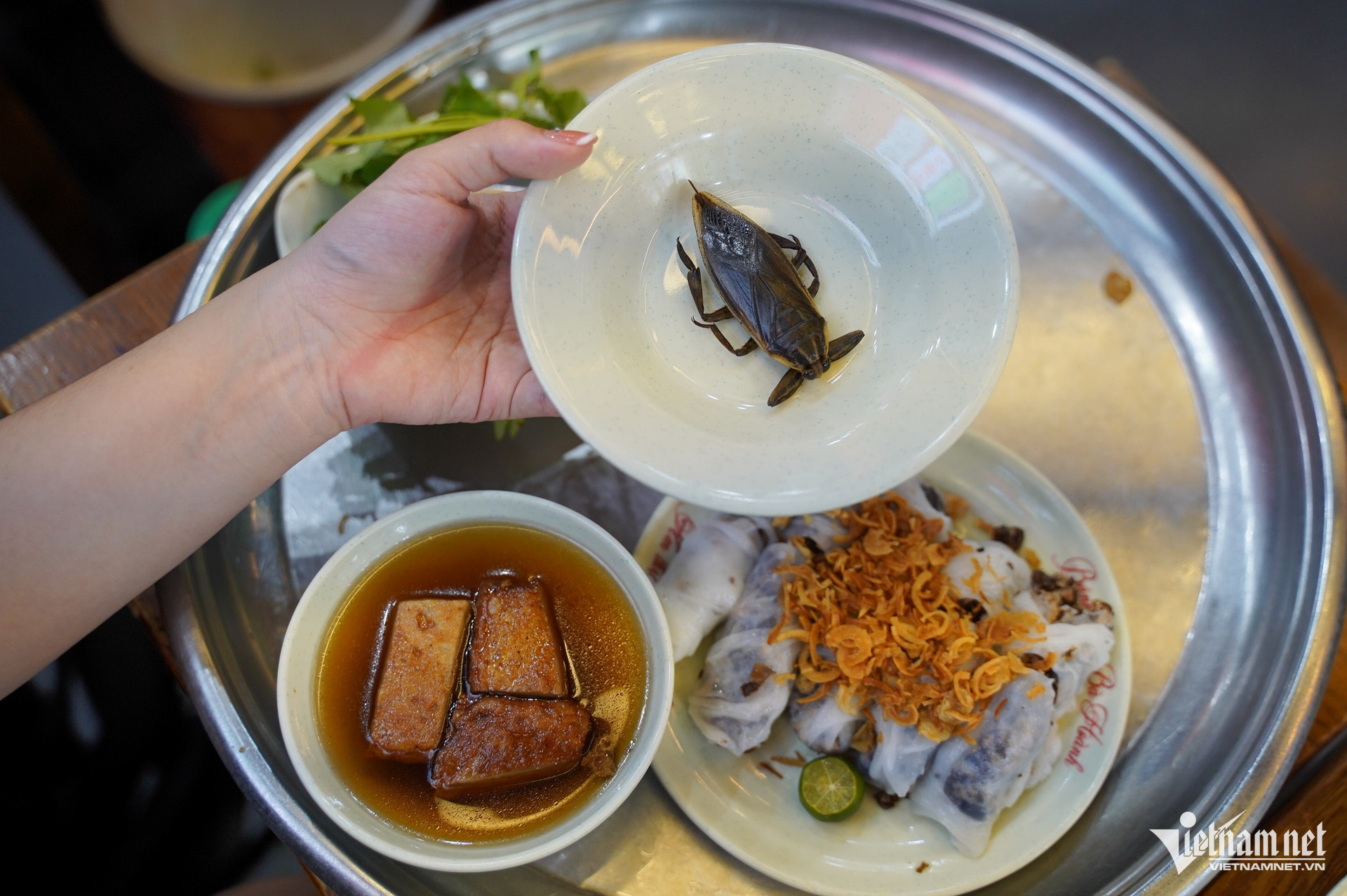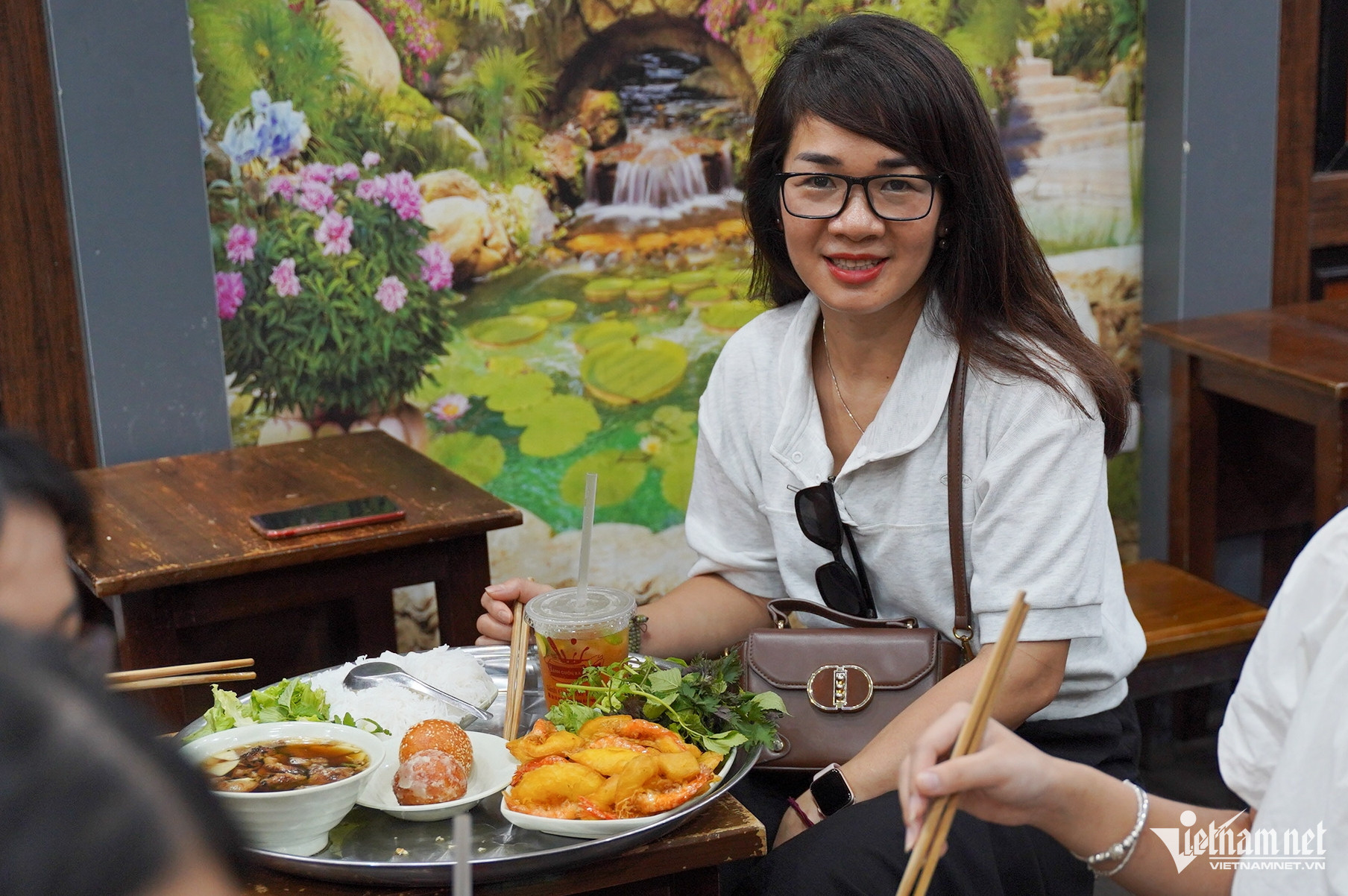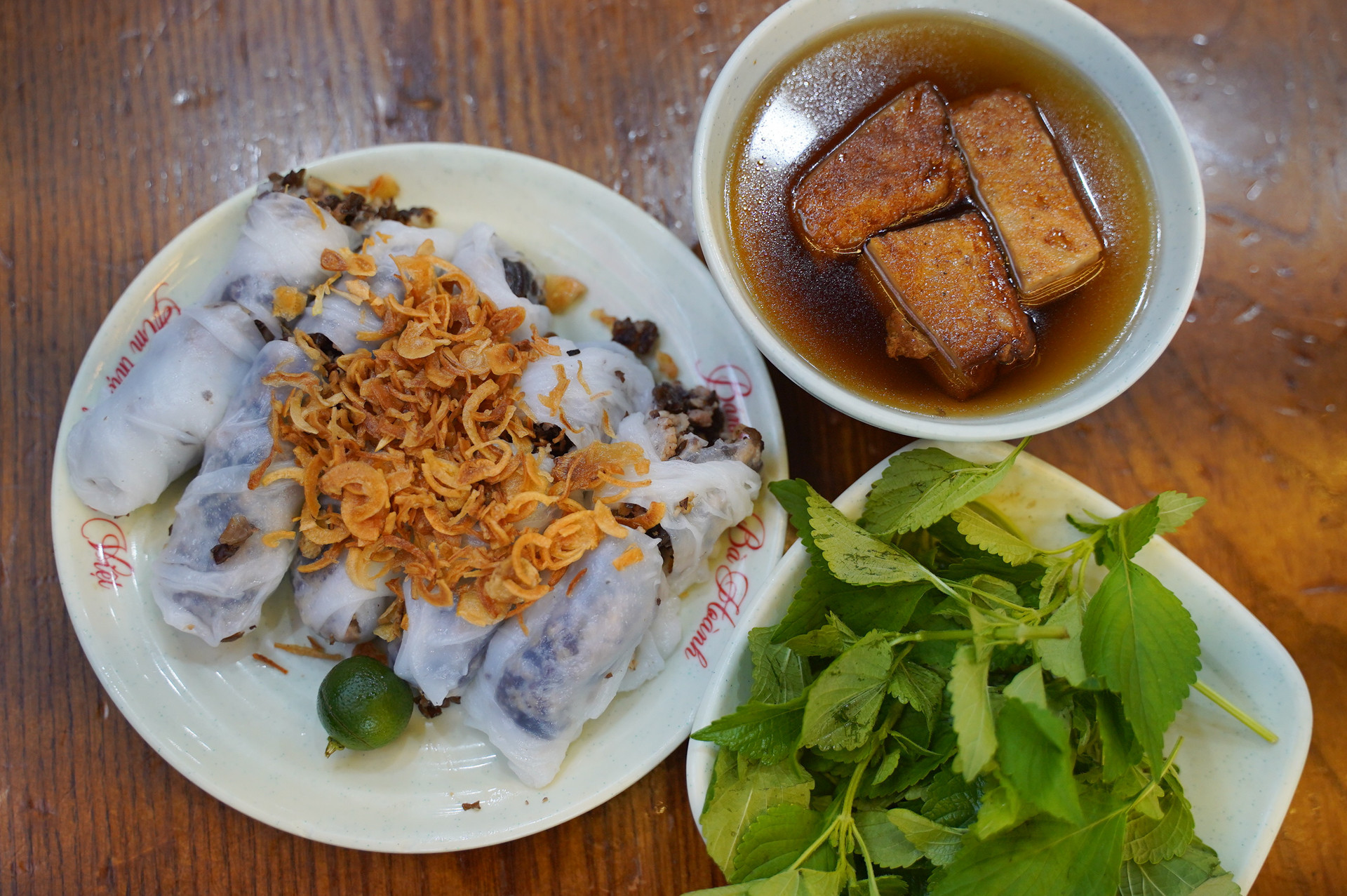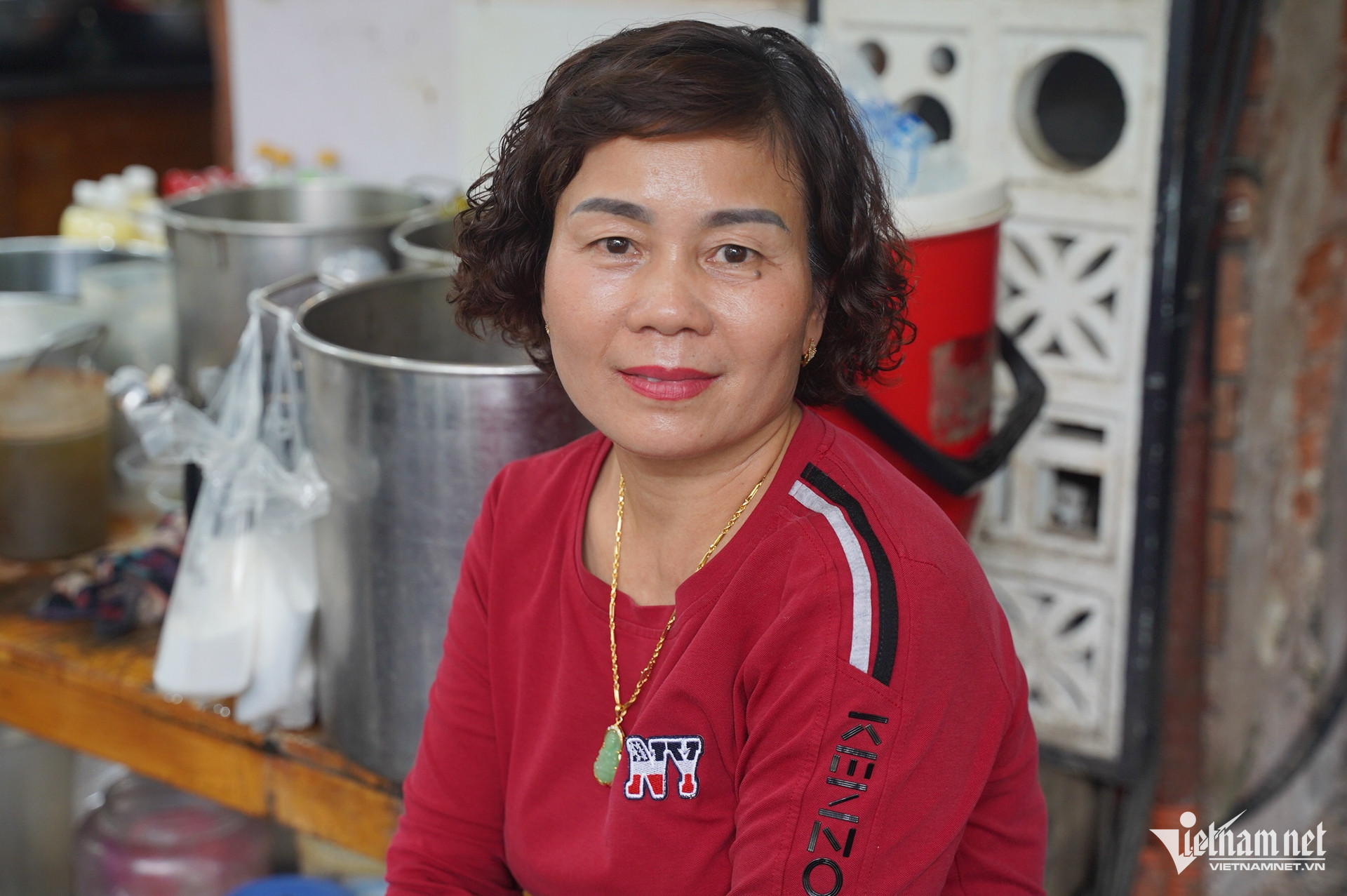Linh Trang - Kim Ngan
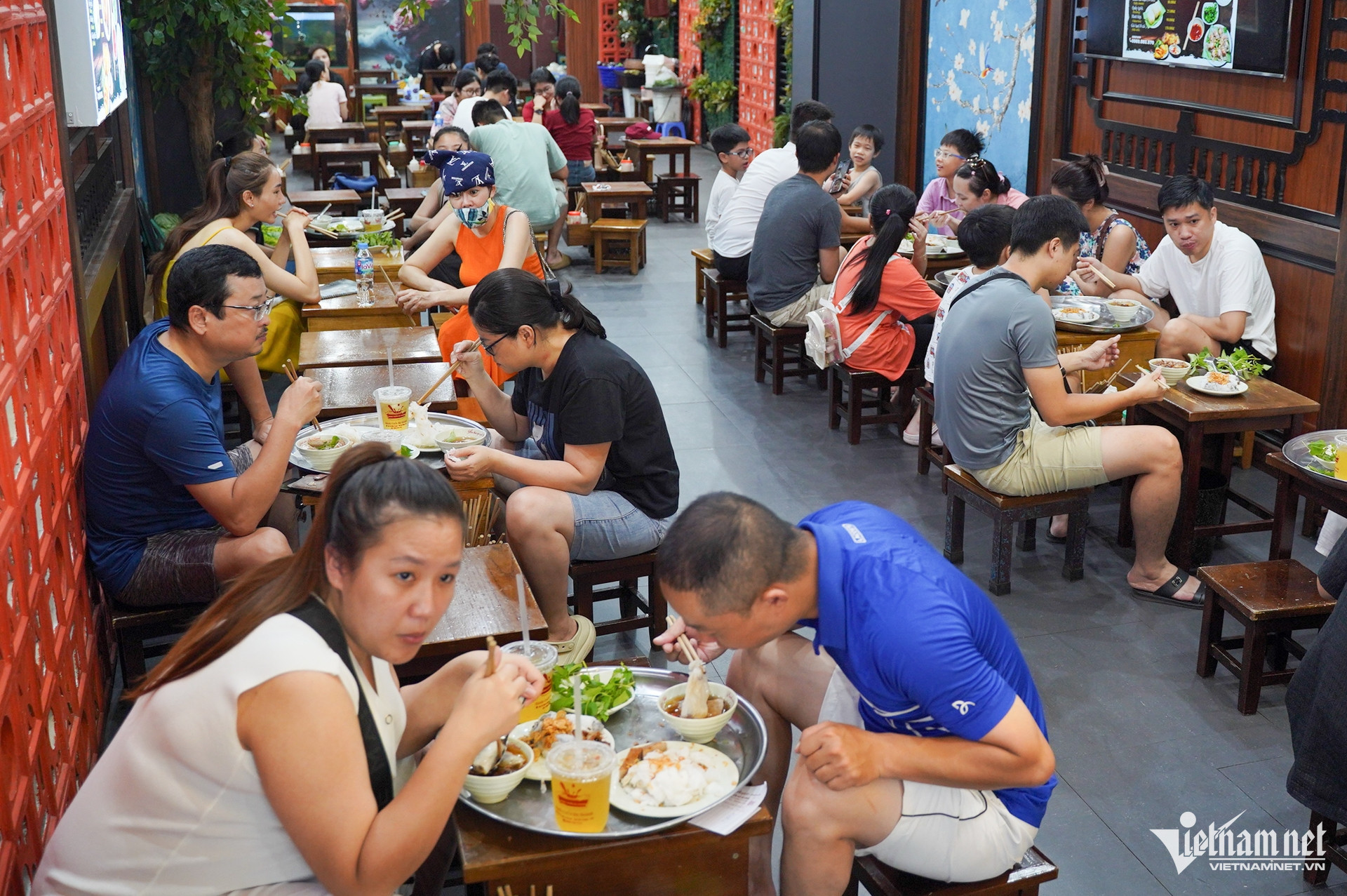
At 7:30 AM, Banh Cuon Ba Hoanh (Mrs. Hoanh’s banh cuon) shop on To Hien Thanh Street in Hai Ba Trung District, Hanoi, is bustling with customers. The owner and staff quickly arrange banh cuon (steamed rice rolls), cut chả (pork pie), pour dipping sauce, and serve the dishes to the diners.
According to Ms. Nguyen Thi Nhung (53, shop manager, and daughter-in-law of Mrs. Hoanh), the shop was opened by Mrs. Hoanh over 70 years ago. Initially, Mrs. Hoanh carried Thanh Tri banh cuon in a basket, selling it throughout the streets. As she gained regular customers, she rented a small house on To Hien Thanh Street to open her shop.
The business grew as satisfied customers recommended it to others, and the shop expanded, placing tables and chairs from inside the house to the sidewalk. The family eventually rented a larger store next door.
In "Hanoi's 36 Streets," writer Thach Lam called banh cuon "the quintessential snack of Hanoi." He described Thanh Tri banh cuon as "thin as paper and as clear as silk. It has a fragrant taste, smooth and chewy dough. Vegetarian banh cuon is light, while meat banh cuon is rich with a bit of onion fat."
Today, it is not easy to find Thanh Tri banh cuon shops in Hanoi that maintain the traditional flavor.
According to Nhung, Mrs. Hoanh was a native of Thanh Tri village and always cherished the hometown dish. Despite modern machinery, the family continues to hand-make the rice rolls. In 2019, Mrs. Hoanh's Banh Cuon was one of nine dishes served at the US-North Korea summit in Hanoi.
Nhung explained that making delicious banh cuon requires selecting good rice. The rice is soaked for two hours, finely ground, and meticulously filtered twice over half a day. The batter must not sit for too long, as it can turn sour.
When steaming, the chef must work evenly, making the banh cuon thin, soft, and smooth but also chewy. The cooked banh cuon is removed using a flat bamboo stick, spread out, and filled or brushed with onion fat as requested.
"Mrs. Hoanh's banh cuon initially consisted of thin steamed rice rolls brushed with onion fat, served cold with dipping sauce and cha moc. However, many customers didn't prefer cold banh cuon, so we later added hot banh cuon filled with minced meat and wood ear mushrooms," said Nhung.
Each layer of white, soft banh cuon, brushed with rich onion fat, is neatly placed on a plate. The cha is cut into thick, generous pieces. Customers can also order grilled meat or meatballs to accompany their banh cuon. The dipping sauce has a beautiful brown color, with a balanced sweet and sour taste, which is crucial for enhancing the flavor of the banh cuon.
A unique ingredient at Banh Cuon Ba Hoang that is not commonly found elsewhere is ca cuong. This water bug, usually found in ponds, lakes, and fields, has become rare. Nhung always sources it from the countryside to serve diners.
"Unlike the common methods of frying or grilling, we steam the water bug to retain its essential oil and its beautiful appearance," said Nhung.
Currently, each water bug at the shop costs 60,000 VND, double the price of a vegetarian banh cuon dish. "Ca cuong is expensive because this unique ingredient is increasingly rare," Nhung explained.
Many customers from other provinces or abroad seek out the shop to try the special ca cuong flavor. "Many people initially feel uneasy seeing this insect, but after being introduced to and tasting it, they find it enjoyable," Nhung said.
Water bug has a strong essential oil aroma that may be off-putting to those unfamiliar with it. Diners should consider this before adding water bugs to their dish.
Minh from Dong Da District brought her nieces to enjoy Mrs. Hoanh's banh cuon and other traditional dishes at the shop. Minh said she prefers the banh cuon here for its thin, smooth, chewy texture combined with fragrant filling and sweet and sour fish sauce.
Nguyen Khanh Linh from Hoan Kiem District has dined at Ba Hoanh Banh Cuon many times and is always satisfied. "The banh cuon is handmade, thin, smooth, and not sour. However, during peak hours, the shop is very crowded, and the wait can be long, sometimes up to 20 minutes," Linh said.
The Michelin Guide 2024 lists 99 restaurants in the Michelin Selected category. Hanoi has 33 restaurants on this list, with Banh Cuon Ba Hoanh being one of the five new additions. According to Nhung, this is a joy for the whole family and motivation to continue preserving the traditional flavor of their cuisine.
The banh cuon at the shop ranges from 30,000 to 60,000 VND per serving. If customers order a full serving with water bugs, the price can reach 120,000 VND per serving. "The shop can sell thousands of banh cuon servings daily, with 30-50 ca cuong sold," Nhung shared.
Besides banh cuon, the shop sells various traditional snacks like banh gio, banh duc, banh nep, banh tom, and banh te, with prices ranging from 6,000 to 150,000 VND per item.
The shop is open from 6 AM to 9 PM, with peak hours from 7 to 8 AM and 11 to 1:30 PM. The shop is easy to find on the main road, with a spacious, clean dining area accommodating 40-50 tables.
During peak hours, the shop is very crowded, resulting in longer wait times.
Mrs. Hoanh’s banh cuon is a long-established brand with a loyal customer base and attracts many local and international tourists. However, some food review apps suggest that it is not as tasty as before and has higher prices compared to similar places.
"Pairing Mrs. Hoang’s banh cuon with cinnamon cha (pork pie) is much better than with meatballs," many diners said.
 |
 |
